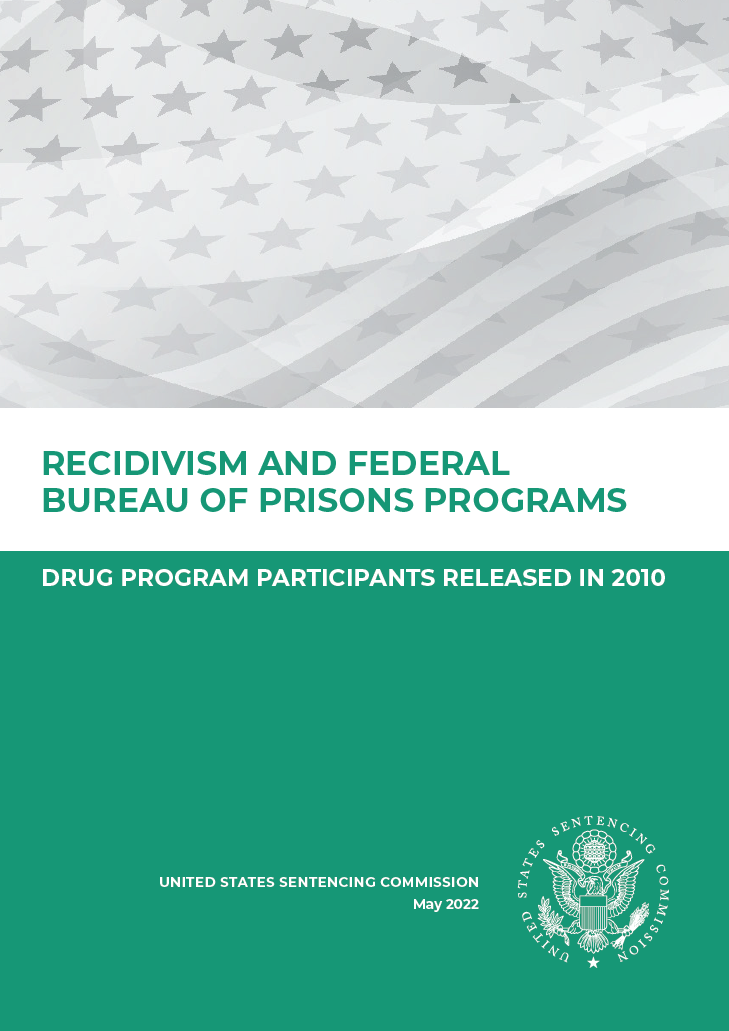Overview
(Published May 17, 2022) This report is the fifth in a series continuing the Commission’s study of the recidivism of federal offenders released in 2010. In this report, the Commission provides an analysis of data on the recidivism of federal offenders who participated in Federal Bureau of Prisons (BOP) drug abuse treatment while incarcerated. The study examines whether completion of drug programs offered by the BOP impacted recidivism among a cohort of federal offenders who were released from prison in calendar year 2010. The report combines data regularly collected by the Commission, Federal Bureau of Investigation (FBI) criminal history records, and data on program completion and participation provided by the BOP.
In this report, Drug Program Participants were offenders who participated in one of the following programs:
-
Residential Drug Abuse Program (RDAP)
- The first group comprises 8,474 offenders who the BOP marked as eligible to participate in RDAP while serving time in BOP custody.
-
RDAP is the BOP’s “most intensive” drug treatment program and requires that participants receive treatment in a specialized unit that houses only RDAP participants.
-
Non-Residential Drug Abuse Program (NRDAP)
- The second group comprises 4,446 offenders who were marked as eligible to participate in NRDAP.
-
NRDAP consists of drug treatment, conducted primarily in a group setting, over the course of 12 to 24 weeks.
Related Materials:


Key Findings
This study observed a significant reduction in the likelihood of recidivism for offenders who completed the Residential Drug Abuse Treatment Program or the Non-Residential Drug Abuse Treatment Program.
-
RDAP Completers had lower rates of recidivism, compared to eligible offenders who did not complete or participate in the program. Less than half of RDAP Completers (48.2%) recidivated in the eight-year follow-up period of this study, compared to 68.0 percent of RDAP Eligible Non-Participants.
- RDAP Completers were 27 percent less likely to recidivate compared to RDAP-Eligible Non-Participants.
- RDAP Completers had higher post-release rates of drug-related recidivism, compared to RDAP Participants and RDAP Eligible Non-Participants.
-
NRDAP Completers had lower recidivism rates compared to offenders who did not complete or participate in the program. Nearly half (49.9%) of offenders who completed NRDAP recidivated during the study period, compared to over half (54.0%) of NRDAP Eligible Non-Participants.
- NRDAP Completers were 17 percent less likely to recidivate compared to eligible non-participants and offenders with a history of substance abuse who served at least five months in BOP custody.

